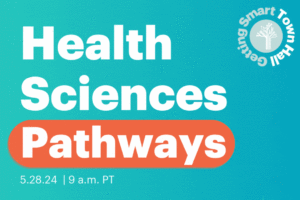What To Do When Your Favorite Tech Tool Calls it Quits

This is my 7th year as a technology-using educator. For the past three years, I’ve had the opportunity to serve as a technology coach to middle school teachers which means I am not only looking at apps directly relevant to my own personal use but also those of math, science, language arts, social studies, choir, Latin, Spanish, French… you get the idea. In short, I’ve become pretty familiar with a number of great tech tools that make a difference every day for teachers and students. Need an LMS? I’ve got ya covered. Looking for a PDF annotation tool? No sweat. Something to help add some panache to your presentations? You got it.
But there’s an ugly side to all these free web-based tools that have spawned dozens of conference presentations with cleverly-worded titles: sometimes they fail. And I don’t mean that they fail in the classroom in the middle of a demonstration (though, obviously, that happens to the best of us. Even Google fails.) I’m talking about the big fail: shutting down the service. Sometimes it’s the result of a buy-out (like when my favorite location-based service was acquired and shut down by Facebook… RIP Gowalla!) or sometimes the company just can’t monetize their product. The latter, notably, just happened with Infuse Learning. Seeking to make ‘student learning visible,’ the service provided a free formative assessment platform that, among its competitive advantages, boasted a drawing tool allowing students and teachers to draw their questions/answers.
So what do we do about this? Do we thrash about and lament on Twitter about how much we want the tool to continue its service? Do we just move on to the next tool? What happens when that one can’t sustain itself? Here are three tips to consider the next time you’re faced with this dilemma:
1. TINSTAAFL
There is no such thing as a free lunch. The web has conditioned us to believe that everything should be free. Except that nothing is free. Your Google search results aren’t free. Your Facebook account isn’t free. The list-quiz you just finished on Buzzfeed certainly isn’t free. All these products have different monetization plans, but we don’t seem to mind when we’re exposed to ads or have our information sold when it isn’t school-related. But put up an ad on an education service? Unthinkable. And don’t even think about a for-profit use for student metadata…
Solution: If you like a service, pay for it. If there isn’t currently an option to pay, email the creator/developer and beg to send them money. (Seriously.) This isn’t a defense of over-priced, over-hyped products that rip people off, this is about those products you like and are already using. If you want something to stick around, use your PTA funds, Christmas money, or even the spare change in your couch. Sometimes, for the equivalent of a cup of overpriced coffee, you can help ensure that the service you rely on is around the next time you want to use it in a lesson.
2. Think About Ideas, Not Tools
Always ask yourself what you’re hoping your students will learn before you select your tool. The technology should always be in service of the learning. This is in sharp contrast to how many of us walk away from a conference session thinking, “that was neat; how can I use that?” If you don’t already know what specific lessons a new-found tool could facilitate, you should probably not try and force-fit your curriculum, no matter how pretty the colors or how slick the design.
3. Think Categorically
Similar to point #2, you need to think about the various roles that each of your tools fill. You shouldn’t have tech-specific lessons, but you should know what kinds of technology would best augment student learning. For example, when I wanted to assess students before giving them instruction, I would look at the three or four tools I frequent for formative assessment and then look at the ways each tool would be better or worse for what I wanted to accomplish. The best recommendation I’d have for you in this regard is to keep a relational database with each tool meta-tagged so you can search quickly and painlessly. (Ok, now for you humans out there that want me to speak English, I have an Evernote folder with the tools I find and I add searchable tags like ‘formative,’ ‘assessment,’ and ‘metacognition’ so I can enter the term or terms I’m looking for and then decide on what tool I want.)
As educators, the failure or success of the apps we know and love (and, thus, any future ones to be invented) rests squarely on our shoulders. Sure, many companies are hoping that district leaders will sign on to an admin-level package with data dashboards and everything else, but many companies are well-aware of the fragmented and sometimes siloed nature of teaching in the classroom and are trying to put the tools in your hands as fast as they possibly can, rather than waiting on your curriculum directors to get around to signing that contract. What’s more is that it really is in service of your students, each hoping to make a difference in your classroom and beyond. Let’s not let another one go down without a fight… from us.
For more blogs by Greg Garner, check out:








0 Comments
Leave a Comment
Your email address will not be published. All fields are required.